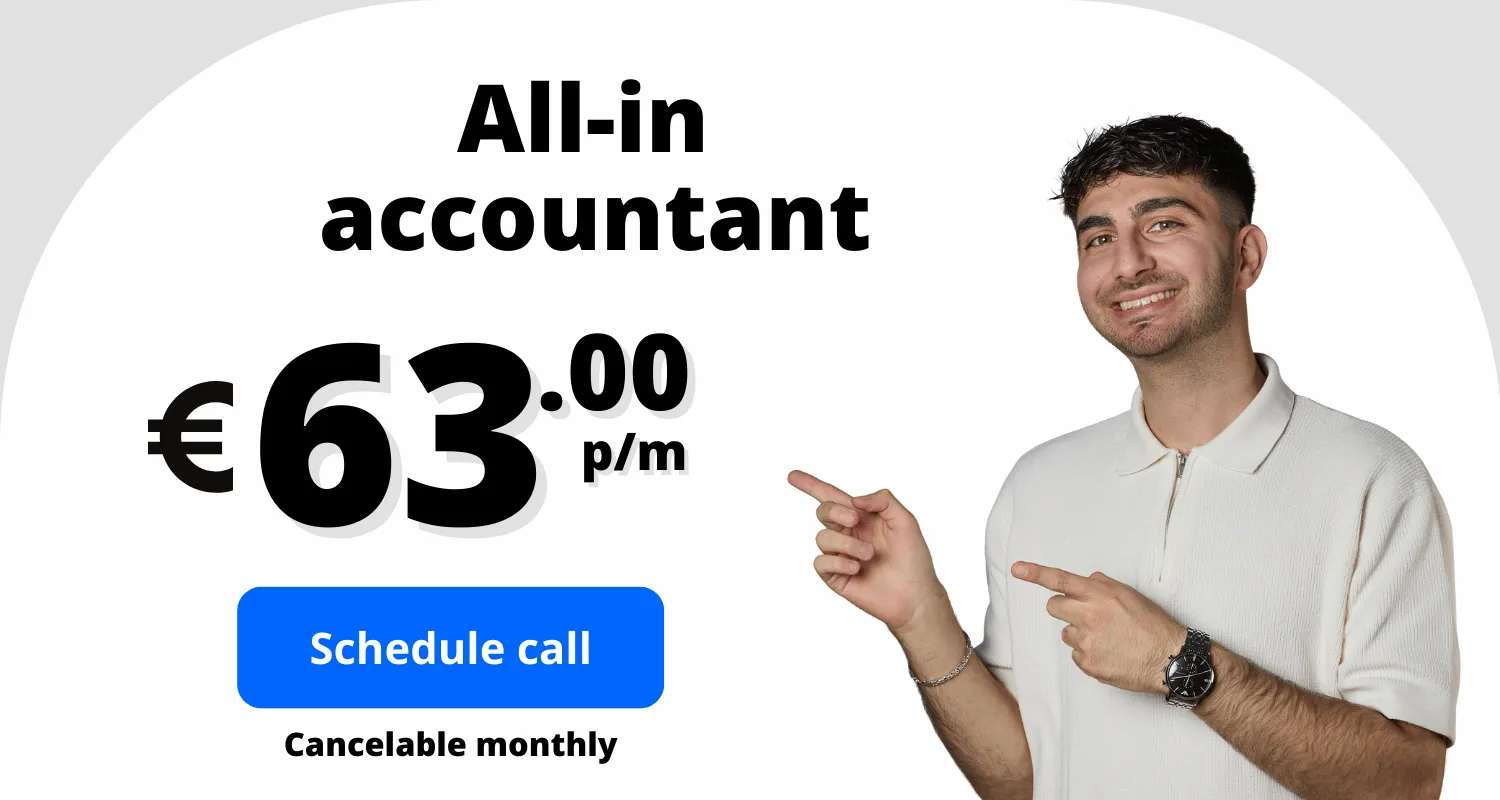Self-employed alongside salaried employment
Als je naast je vaste baan zzp’er wilt worden, profiteer je van het beste van twee werelden. Je behoudt je salaris en werknemersrechten, terwijl je tegelijkertijd kunt uitproberen hoe ondernemerschap in de praktijk werkt. Het vraagt wel om een goede planning en duidelijke afspraken, zodat je voorkomt dat je in de knel komt met tijd of verplichtingen. Hieronder zetten we de voordelen en nadelen overzichtelijk voor je op een rij.
Voordelen en nadelen
Zzp’en naast loondienst heeft aantrekkelijke voordelen, maar ook een paar duidelijke nadelen. Dit overzicht helpt je beide kanten snel te zien.
Advantages | Cons |
Financiële zekerheid | Drukke agenda |
Vrijheid en groei | Extra administratie |
Werknemersvoordelen | Minder fiscale voordelen |
Ervaring en netwerk | Werkgever meekrijgen |
Afspraken met werkgever
Check eerst of je arbeidsovereenkomst een verbod op ander werk of een concurrentiebeding bevat. Bespreek daarna open je plannen met je werkgever en benadruk dat je werk er niet onder lijdt en geen concurrentie vormt. Een werkgever mag een bijbaan alleen met een goede reden verbieden, maar je moet dit wel melden. Leg afspraken schriftelijk vast, bijvoorbeeld over toestemming of werktijden. Met heldere communicatie is combineren meestal geen probleem.
Belastingzaken zzp en loondienst
Je loon en je winst uit onderneming worden samen belast in box 1 van de inkomstenbelasting. Je betaalt dus belasting over je totale inkomen volgens de normale tarieven – niet dubbel. Wel moet je als ondernemer zelf extra zaken regelen. Denk aan het doen van je btw-aangifte en het apart zetten van geld voor de belasting, zodat je aan het einde van het jaar niet voor verrassingen komt te staan.
VAT return (sales tax)
Als ondernemer moet je elk kwartaal btw-aangifte doen en btw in rekening brengen op je facturen. Ook als je dat kwartaal geen omzet hebt, moet je toch aangifte (nul) indienen. Vergeet dit niet, want te laat indienen kan een boete opleveren. Noteer de deadlines in je agenda.
Kleineondernemersregeling (KOR)
Blijft je omzet onder €20.000 per jaar? Dan kun je kiezen voor de small entrepreneur scheme (KOR). Je hoeft dan geen btw te rekenen of af te dragen en je hoeft ook geen btw-aangiftes te doen. Dat scheelt in de administratie.
Income Tax
Over je loon draagt je werkgever loonheffing af. Over de winst uit je bedrijf betaal je zelf income tax return via de jaarlijkse aangifte. Je loon en winst worden opgeteld, waardoor je totale inkomen wellicht in een hogere belastingschijf valt. Reserveer daarom direct een deel van je zzp-inkomsten (bijv. 30% van elke factuur) voor de te betalen belasting, zodat je later niet krap komt te zitten.
Income tax calculation
Gebruik direct onze rekentool om te zien hoeveel inkomstenbelasting je moet betalen. Vul je salaris en winst in en je ziet meteen je totale belasting, inclusief aftrekposten en heffingskortingen. Zo weet je hoeveel je moet reserveren en voorkom je verrassingen.
Deductions
Als je minstens 1.225 uur per jaar aan je bedrijf besteedt, heb je recht op extra aftrekposten. Je kunt dan gebruikmaken van de self-employed deduction (en als starter ook de start-up deduction, wat neerkomt op een flinke korting op je belastbare winst. Daarnaast is voor alle ondernemers de SME profit exemption van toepassing, waarmee 12,7% van je winst belastingvrij blijft.
Verzekeringen en pensioen
In loondienst ben je verzekerd voor arbeidsongeschiktheid en bouw je pensioen op; als zzp’er moet je dit zelf regelen. Overweeg een disability insurance voor inkomensdekking bij ziekte en een zakelijke aansprakelijkheidsverzekering. Zorg ook dat je zelf voor je pensioen spaart, want je krijgt later wel AOW maar een aanvullend pensioen moet je eigenhandig opbouwen.
Stappenplan: starten als zzp’er naast je baan
In het stappenplan hieronder lees je in 6 overzichtelijke stappen wat je moet regelen, van je inschrijving bij de KvK tot het bijhouden van je uren.
Stap 1 – Controleer je arbeidsovereenkomst
Check je contract op een nevenwerk- of concurrentiebeding en vraag altijd vooraf toestemming aan je werkgever.
Stap 2 – Schrijf je in bij de KvK
Sign up at the Kamer van Koophandel (meestal als eenmanszaak) en ontvang een KvK-nummer en btw-identificatie.
Stap 3 – Organiseer je administratie
Houd je administratie vanaf dag één op orde (aparte zakelijke rekening, boekhoudsoftware gebruiken, bonnetjes bewaren).
Stap 4 – Regel de fiscale zaken
Doe elk kwartaal je btw-aangifte en bereid je voor op de inkomstenbelasting (reserveer hiervoor geld).
Stap 5 – Maak een tijdsplanning
Plan vaste tijden voor je zzp-werk en communiceer duidelijk je beschikbaarheid; bewaak ook je eigen rust.
Stap 6 – Houd je uren bij
Leg een urenregistratie aan – noteer alle directe en indirecte uren – zodat je kunt aantonen dat je 1.225 uur haalt voor de aftrekposten.
Veelgemaakte fouten en misverstanden
Bij het starten van je eigen bedrijf worden sommige fouten vaak gemaakt. Dit zijn de meest voorkomende:
- Werkgever niet ingelicht: Een bedrijf starten zonder je werkgever te informeren kan tot problemen of ontslag leiden. Wees eerlijk en voorkom gedoe.
- Belasting onderschatten: Niet al je bijverdienste gaat naar de Belastingdienst, maar je moet wel zelf belasting over je winst betalen. Reserveer dus voldoende voor de aanslag.
- Loonheffingskorting dubbel gebruiken: Pas de loonheffingskorting maar bij één werkgever toe (meestal je loondienst). Doe je het dubbel, dan volgt later een naheffing.
- Geen verzekeringen of pensioen regelen: Zonder AOV of buffer loop je risico bij ziekte, en geen pensioen opbouwen kan later flink tegenvallen.
Frequently Asked Questions
Mag ik van mijn werkgever zzp werk doen?
Ja, meestal wel, mits je het meldt en toestemming vraagt. Check je contract op een verbod en bespreek het, zonder goede reden kan je werkgever het niet weigeren.
What if I don't make enough hours?
Dan mis je bepaalde belastingvoordelen (zoals de zelfstandigenaftrek) en betaal je iets meer belasting over je winst. Je mag echter gewoon parttime ondernemen, er is geen minimumaantal uren vereist.
Moet ik een aparte verzekering afsluiten als ik ga zzp’en?
Niet verplicht, maar wel verstandig. Voor je loondienstdeel ben je via je werkgever verzekerd, voor je zzp-werk niet. Overweeg dus een arbeidsongeschiktheidsverzekering en een zakelijke aansprakelijkheidsverzekering voor je zelfstandige werk.
Hoe combineer ik efficiënt zzp en loondienst?
Met goede planning en communicatie. Plan je zzp-uren goed, laat werkgever en klanten weten wanneer je beschikbaar bent, en bewaak je grenzen. Zo is de combinatie prima vol te houden.
Mag ik loonheffingskorting toepassen op mijn zzp-inkomsten?
Nee, die kun je maar bij één inkomen gebruiken (doorgaans bij je loon). Je zzp-inkomsten zijn bruto en de korting wordt achteraf via de belasting verrekend. Zet de loonheffingskorting dus niet dubbel aan.






